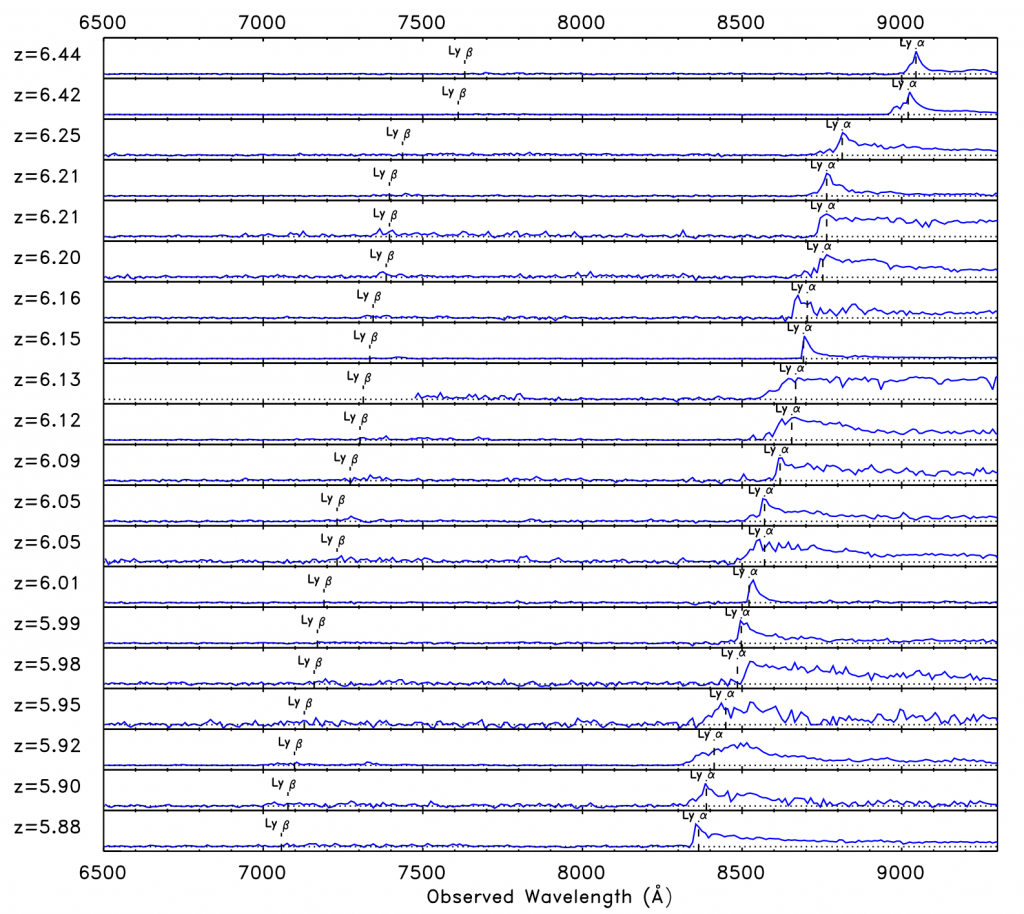Canada-France High-z Quasar Survey
The Canada-France High-z Quasar Survey (CFHQS) is an ambitious survey to discover a large sample of the most distant quasars. Such quasars allow us to probe the growth of black holes and galaxies in the early universe and the reionization of the diffuse intergalactic medium by the first substantial population of stars.
Image from the Canada-France-Hawaii Telescope of the quasar CFHQS J2329-0301 at redshift z=6.417. This image is a combination of images taken in 3 different filters: r, i and z. The high redshift of this quasar causes it to only show up in the z filter and hence appear much redder on this image than more nearby stars and galaxies.
The survey was carried out with optical imaging from the 1 sq deg MegaCam camera at the
Canada-France-Hawaii Telescope (CFHT). The CFHQS has discovered 20 quasars with redshifts ranging from 5.88 to 6.44. More details on these discoveries and the science enabled can be found from the publications link at the bottom of this page.
Optical spectra (from Gemini GMOS and Keck ESI) of the 20 CFHQS quasars. There is considerable diversity in the Lyman alpha emission line strengths and profiles.
Science highlights
- 20 new sightlines to probe the ionization state of the universe at 5<6.4.
- Determination of the quasar luminosity function and black hole mass function at z=6.
- Discovery that most z=6 quasars are accreting at close to the Eddington limit, the maximum theoretical rate.
- Strongest constraints on the quasar contribution to the ionizing photon budget at z=6, less than 5% of that required to
maintain a fully ionized IGM.
- Global black hole to stellar mass ratio declines sharply at z~6, due to inefficient black hole seeding at higher
redshift and/or Eddington-restricted accretion.
- Discovery of extended (~20 kpc) Lyman alpha halo around a z=6 quasar.
CFHQS Publications

